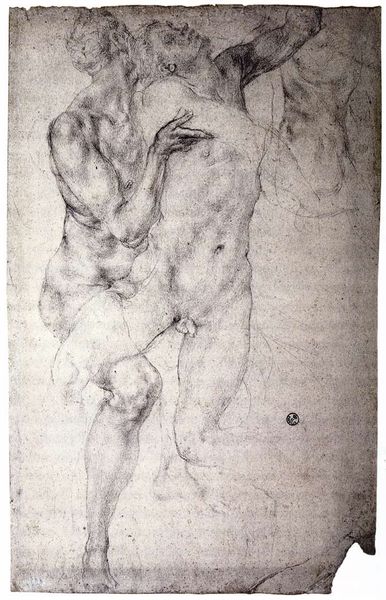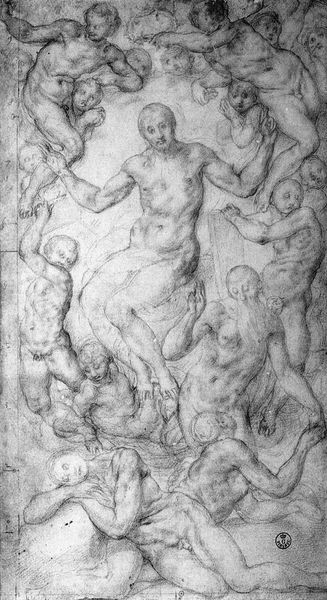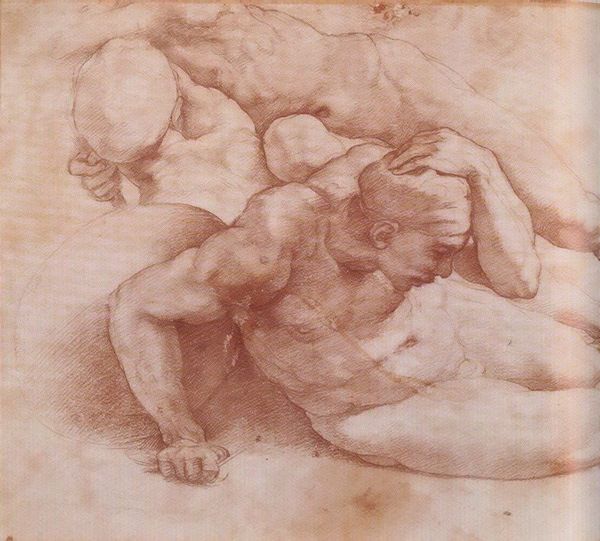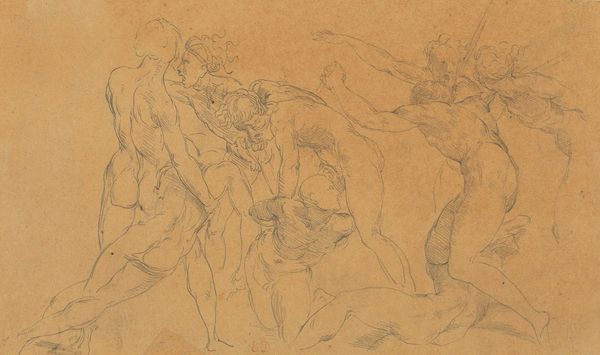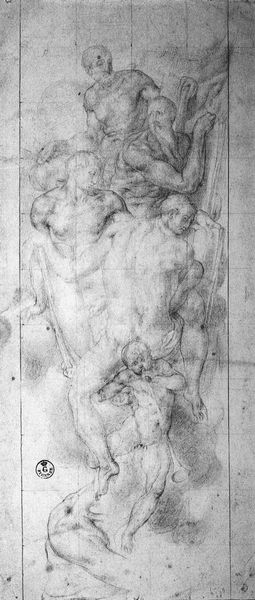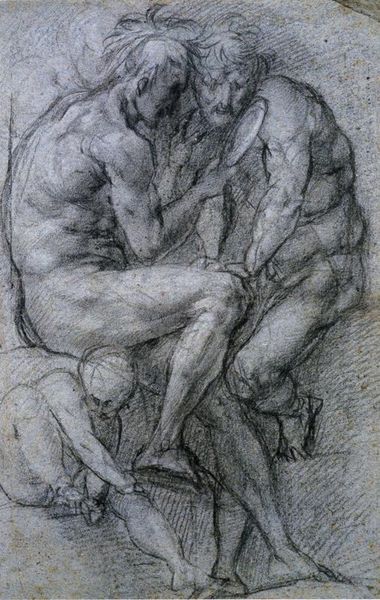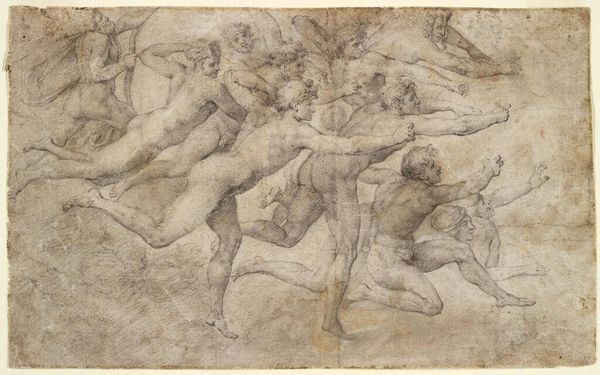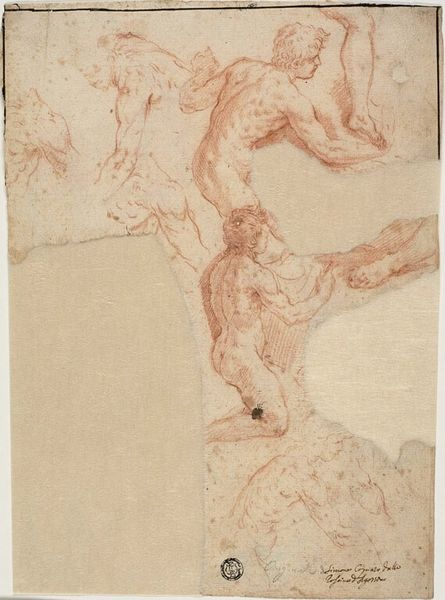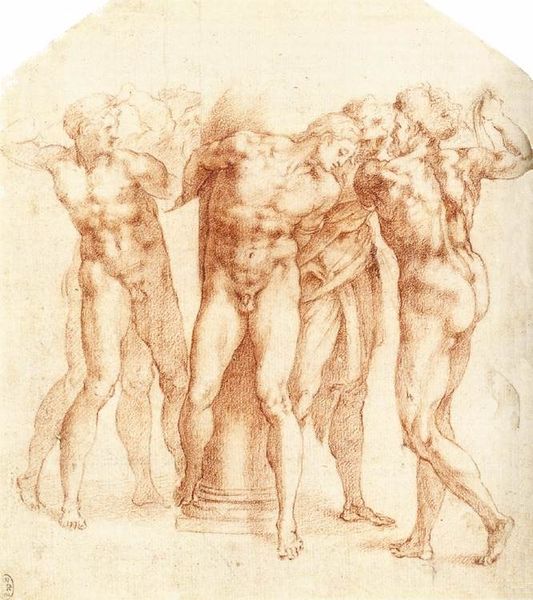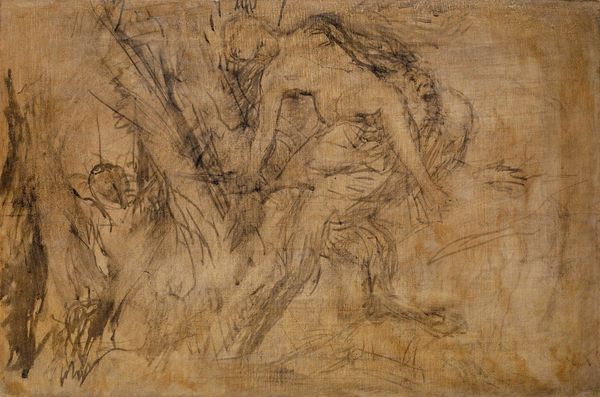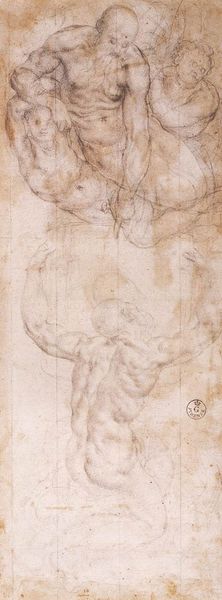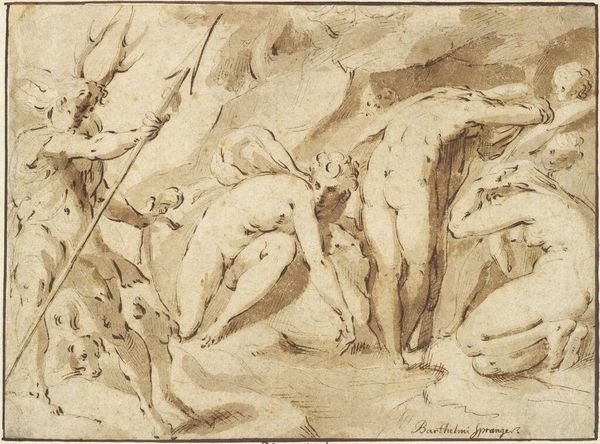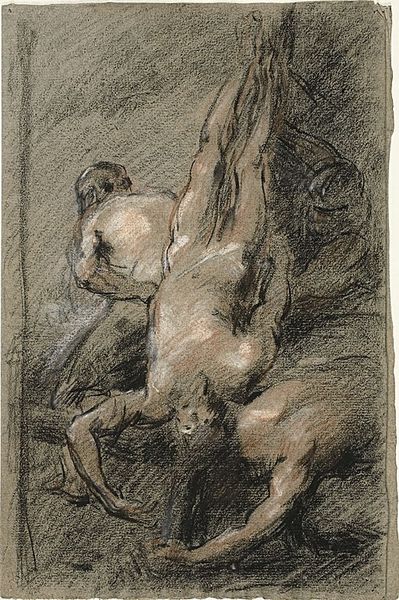
drawing, paper, charcoal
#
drawing
#
charcoal drawing
#
mannerism
#
figuration
#
paper
#
pencil drawing
#
line
#
charcoal
#
history-painting
#
nude
Copyright: Public domain
Curator: This is Jacopo Pontormo's "Group of the Dead," a charcoal drawing from around 1550, currently housed in the Uffizi Gallery. I find the sheer number of figures overwhelming, almost claustrophobic, but also quite beautiful. What are your initial thoughts? Editor: It’s striking how immediate it feels despite being so old. The charcoal gives it a kind of rawness. I'm also wondering about the artist's process; the lines are so layered. What does the material and the making of this piece tell us about Pontormo's intentions? Curator: Consider the physical act of creating this work. Charcoal, a readily available material, allows for both precision and broad, expressive gestures. This challenges the typical hierarchy, doesn't it? Was Pontormo consciously using an everyday material to depict a scene of profound drama and perhaps leveling art with craft? Editor: So, it's not just the subject matter that's important, but also the choice of materials and technique? Is Pontormo, in a way, democratizing art through his medium? Curator: Precisely. The rapid strokes of charcoal allow Pontormo to explore movement and form. Also, think about where this piece was made – Renaissance Florence. It suggests something about the relationship between art and labour at the time, doesn't it? Is he commenting on consumption of the arts through these raw depictions, questioning that relationship to high-end patronage? Editor: It hadn't occurred to me to think of charcoal as challenging the artistic hierarchy, but that makes perfect sense. Thinking about the materials changes how I view the subject itself. Curator: Indeed. Pontormo’s “Group of the Dead” then becomes not only a representation of death but also a testament to the power of readily accessible materials in creating art, as well as labor questions during this time. Editor: I see that the process and material choices weren't merely utilitarian; they actively shaped the meaning of the artwork itself. Curator: Precisely. Examining art through the lens of material production unveils layers of meaning often overlooked by focusing solely on the subject. Editor: I will definitely look closer at materiality from now on; it seems to hold just as many clues about artistic intention and broader social contexts as the iconography itself!
Comments
No comments
Be the first to comment and join the conversation on the ultimate creative platform.
